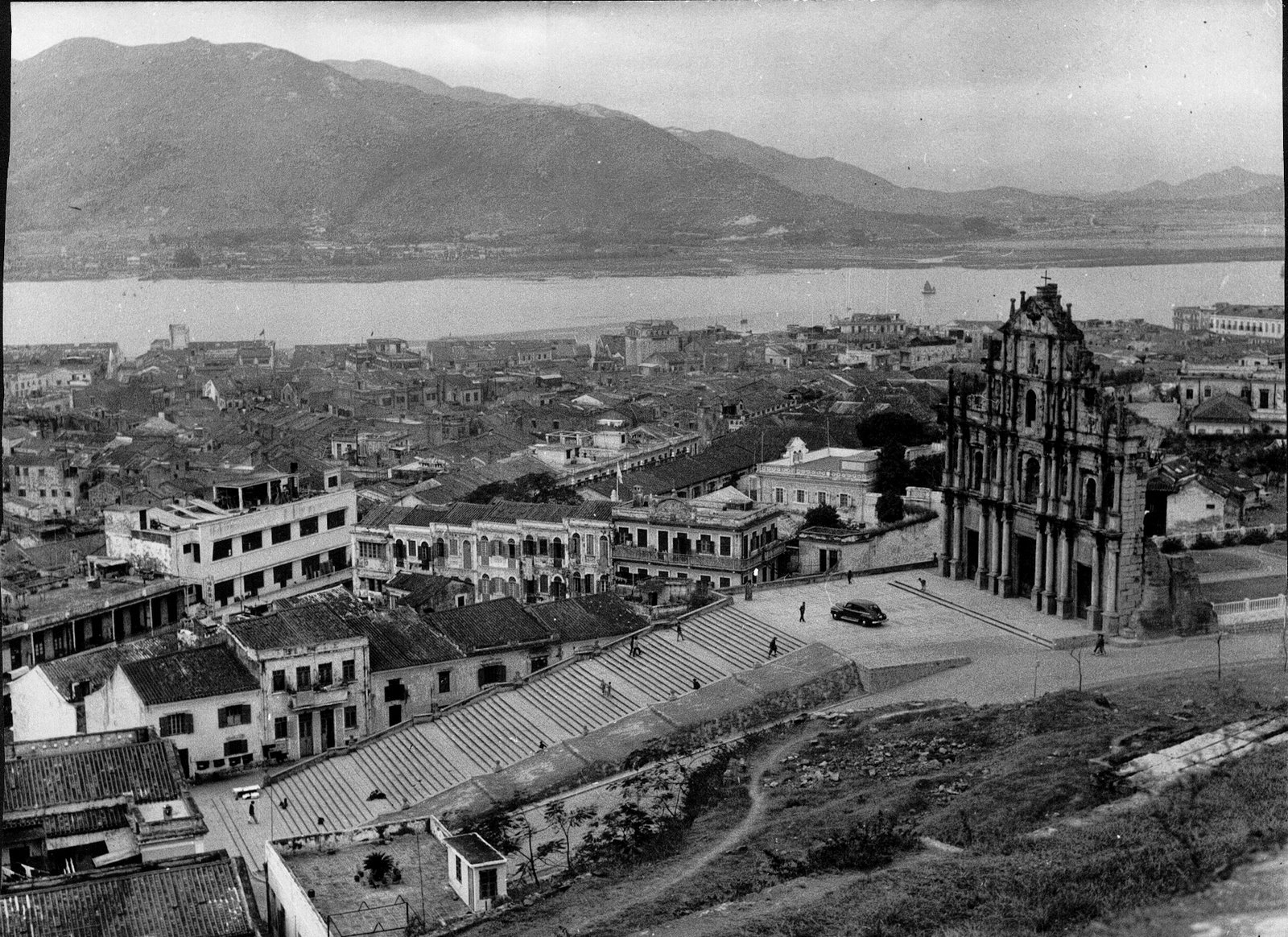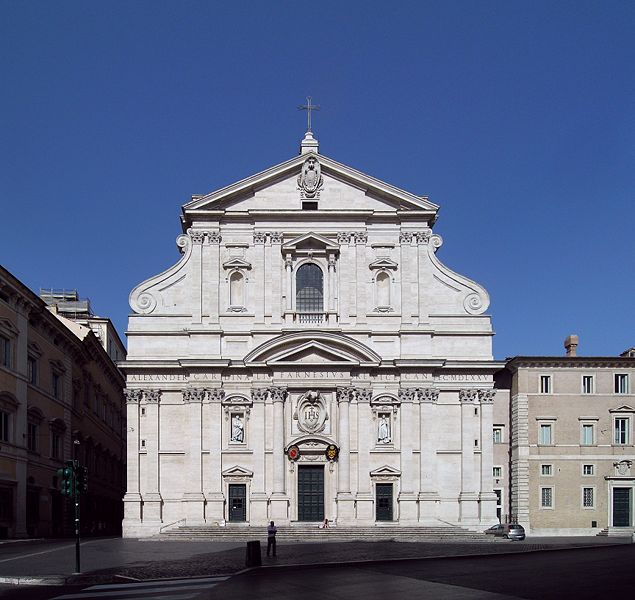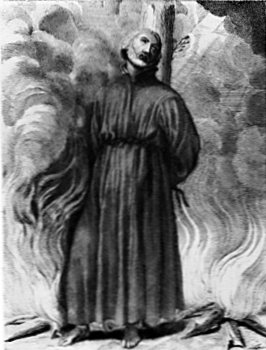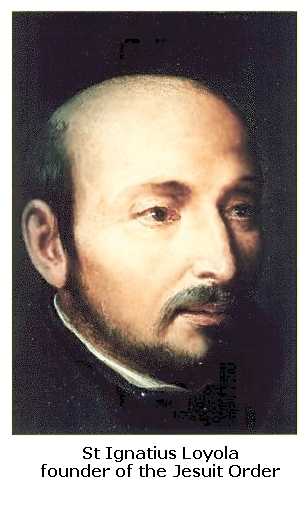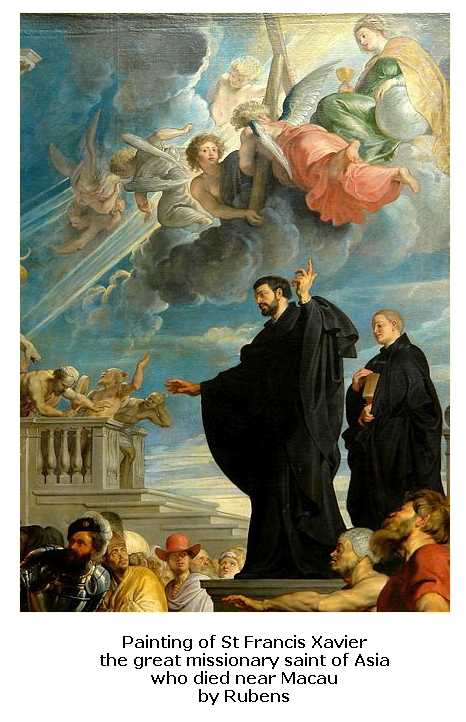SÃO PAULO
by Henry d'AssumpçãoClick on the SEARCH icon and enter his ID number (1) to be taken to his personal page
|
Macau's most famous landmark is the façade of the Church of the Mother of God (Madre de Deus), which is today commonly called São Paulo (St Paul's church)1. It is all that is left of what was once the outstanding baroque structure of Eastern Asia. An earlier church was first constructed on the site in 1580, which was burned in 1595 and destroyed by fire in 1601. Reconstruction of a magnificent new church began in 1602, which was not completed until 1644. It was part of an complex including a college – the first in Western Asia – and a large library that was considered the most valuable in South-East Asia. |
S. Paulo 1961
Click on image to expand
|
S. Paulo was an imposing structure, 37m long, 20m wide and 11m high with an ornate granite façade facing south and a broad flight of 66 granite steps, and would have dominated the landscape of old Macau, and made an impressive sight to all vessels going up the Pearl River to Canton (Guangzhou). It is described in a Jesuit report, written in 1644 on the completion of the church. ![]() Read the report
Read the report
|
It is said to have been modelled on the Chiesa del Gesù (Church of Jesus), the Mother Church of the Jesuits (but I see only superficial resemblance between their façades). Originally the church had three large halls built with white stones with a grand vaulted roof. The main altar had four statues of Jesuit saints. Doundou, in an internet blog, states that the walls were of chunambuco (a mixture of shells, stones and clay) and lavishly decorated with paintings, ivory, gold and silver. The church, college and library were all destroyed by a disastrous fire during a typhoon in 1835, leaving only the granite façade and stone steps. |
Façade of the Chiesa del Gesù
Click on image to expand
|
|
The artisans who worked on the church were Christian Japanese refugees from Nagasaki who had fled from the religious persecution of the Tokugawa regime2 and local Chinese. Its architect was an Italian Jesuit priest, Fr Carlo Spinola (1564-1622). It seems unlikely, as stated in some articles, that he supervised the construction of the church, because he spent most of his time as a missionary in Japan, operating underground to elude persecution for four years, until he was captured and martyred, 22 years before the church was completed 3. More probably the decorations of the façade were done under the supervision of another Italian Jesuit, Giovanni Nicolao from Nola. |
Blessed Carlo Spinola
Click on image to expand
|
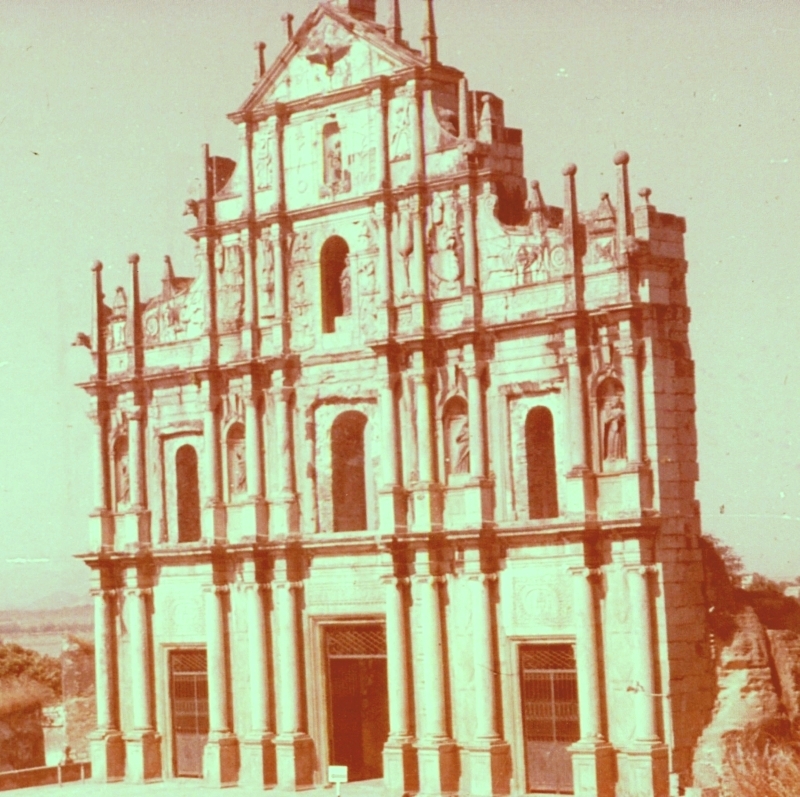
Using the mouse, move the pointer over this image to read more, or click to see more detail about a specific feature.
|
St Ignatius Loyola
|
St Francis Xavier
|
St Francis Borgia
|
St Aloysius Gonzaga
|
The façade was built in four tiers, decorated with columns4 and arches. At the first (lowest) tier are three doorways. Over the central main doorway is inscribed the name of the church in Latin: Mater Dei (Mother of God). The second tier has niches with statues of four Jesuit saints, separated by the three arched windows of the choir loft: Ignatius Loyola, the founder of the Jesuit order, Francis Xavier, the great missionary to Asia, Francis Borgia and Aloysius Gonzaga5.
At the centre of the third tier is a statue of the Assumption of the Virgin Mary, with a frieze of chrysanthemums (representing China) and peonies (representing Japan), standing on a large (originally gilt) moon (clearly a reference to the Entrance Antiphon of the Feast of the Assumption: 'A great sign appeared in heaven: a woman, adorned with the sun, standing on the moon ...' Revelation 12:1). She is surrounded by angels with incense and trumpet. On her left are carved bas-reliefs of:
- a beast with tail, short horns, snout, large bat's wings and breasts, slain by an arrow, with a caption in Chinese "The Devil tempts Mankind to do evil things".
- a Portuguese ship under the protection of Our Lady and
- a baroque fountain.
On the right are three carvings:
- the Tree of Life (referring presumably to the tree at the centre of the garden of Eden – Genesis 3:3)
- a seven-headed monster with an image of the Virgin Mary above one of its heads and the inscription 'The woman crushes the dragon's head' (Reference: 'Then a second sign apeared in the sky, a huge red dragon which had seven heads ... ' Revelation 13:1 and 'I will put enmity between you and the woman, between your seed and her seed. It will crush your head ... ' Genesis 3:15)
- a skeleton with inscription 'Remember death and do not sin'
At the centre of the next tier is a statue of the Child Jesus with a raised right hand and left hand extended (originally holding an cross-topped orb, which is now missing). He is flanked by items from the last few days of the life of Jesus: on the left a whip, crown of thorns, hammer, spears, and on the right a ladder, pliers(?), palms(?) representing his triumphal entry into Jerusalem, nails.
A large dove (originally gilt), representing the Holy Spirit, dominates the top tier. On either side are the sun and moon.
The top two tier include inscriptions in Chinese that are legible from the ground but the calligraphy is of inferior quality.
It is interesting that the bronze statues (and many of the cannons of the fortifications of Macau) were cast in a foundry in the settlement.
At one stage the structure was leaning dangerously and there were calls for the ruins to be demolished but these were fortunately resisted. Archaeological excavations at the site, from 1990 to 1995, uncovered the crypt and foundations that revealed the architectural plans of the building. The ruins were restored by the Government of Macau, with the façade buttressed for protection.
In 2005 the ruins of S. Paulo were listed as part of the UNESCO World Heritage Site Historic Centre of Macau so they will be protected for posterity.
Sources:
- Cesar Guillen-Nuñez, The Façade of St. Paul's, Macao: A Retable-Façade?
- Rogério Miguel Puga, Images and Representations of Japan and Macao in Peter Mundy's Travels (1637), Bulletin of Portuguese/Japanese Studies, Universidade Nova de Lisboa, 2000.
- Ernest S. Dodge Islands and Empires , Europe and the World in the Age of Expansion, Vol. VII
- Austin Coates, A Macao Narrative (Hong Kong and London: Heinemann 1978, p37)
- Charles R. Boxer, Japanese Christians buried in the Jesuit College church of of Sao Paulo in Macao (Monumenta Nipponica, Vol I 1938, pp265-269), quoted by Gary P. Leupp, Interracial Intimacy in Japan
- CA Montalto de Jesus, Historic Macao (Oxford University Press 1984, p97)
- Society of Jesus: Saints and Blesseds
- Wikipedia: Martyrs of Japan
- Wikipedia: Church of the Gesu
- Doundou Tchil: Classical Iconoclast
- Ruins of St. Paul's http://en.wikipedia.org/wiki/Cathedral_of_Saint_Paul_in_Macau
- Marcelo Nishiyama A study of the church of St. Paul in Macao
